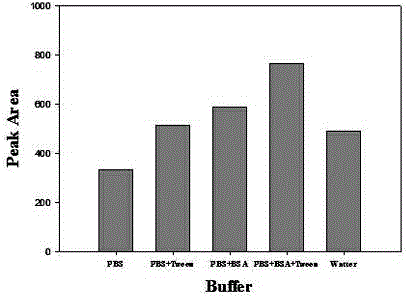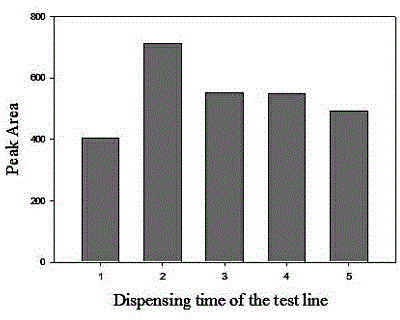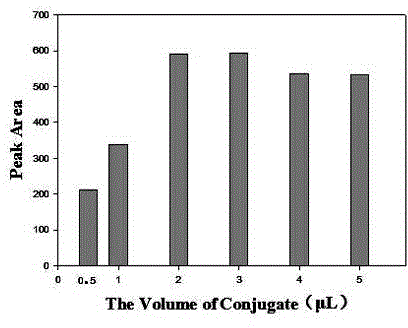Method for detecting microcystin-LR by immunochromatographic test strip
A technology of immunochromatographic test paper and microcystin, which is applied in the field of immunoanalytical chemistry, can solve the problems of difficult preservation of gold nanoparticle sol, and achieve the effect of overcoming difficult preservation, short time and simple operation
- Summary
- Abstract
- Description
- Claims
- Application Information
AI Technical Summary
Problems solved by technology
Method used
Image
Examples
Embodiment Construction
[0041] See Figure 4 ~ Figure 7 the embodiment.
[0042] 1. Preparation of gold nanocage Au NCs
[0043] The gold nanocage involved in this example is prepared by the following method: add 3 mL of 0.75 mmol / L HAuCl to the small Erlenmeyer flask 4 solution, and then add 3 mL of 0.03 mol / L HMT solution, shake well. When the solution gradually became lighter from bright yellow to clear, add 3 mL of 0.30 mol / L PVP and 100 μL of 0.01 mol / L AgNO 3 solution. After shaking gently, quickly add 50 μL of 0.08 mol / L ascorbic acid solution. Stir rapidly for 10 s to ensure that the solution is well mixed. The vial was placed in a dark place at room temperature for 12 hours, and then the product was centrifuged and washed three to five times with water and ethanol. The obtained product was stored at 4°C protected from light. The transmission electron microscope figure of embodiment gold nanocage sees Figure 5 .
[0044] 2. Preparation and purification of gold nanocage-labeled monoc...
PUM
 Login to View More
Login to View More Abstract
Description
Claims
Application Information
 Login to View More
Login to View More - R&D
- Intellectual Property
- Life Sciences
- Materials
- Tech Scout
- Unparalleled Data Quality
- Higher Quality Content
- 60% Fewer Hallucinations
Browse by: Latest US Patents, China's latest patents, Technical Efficacy Thesaurus, Application Domain, Technology Topic, Popular Technical Reports.
© 2025 PatSnap. All rights reserved.Legal|Privacy policy|Modern Slavery Act Transparency Statement|Sitemap|About US| Contact US: help@patsnap.com



